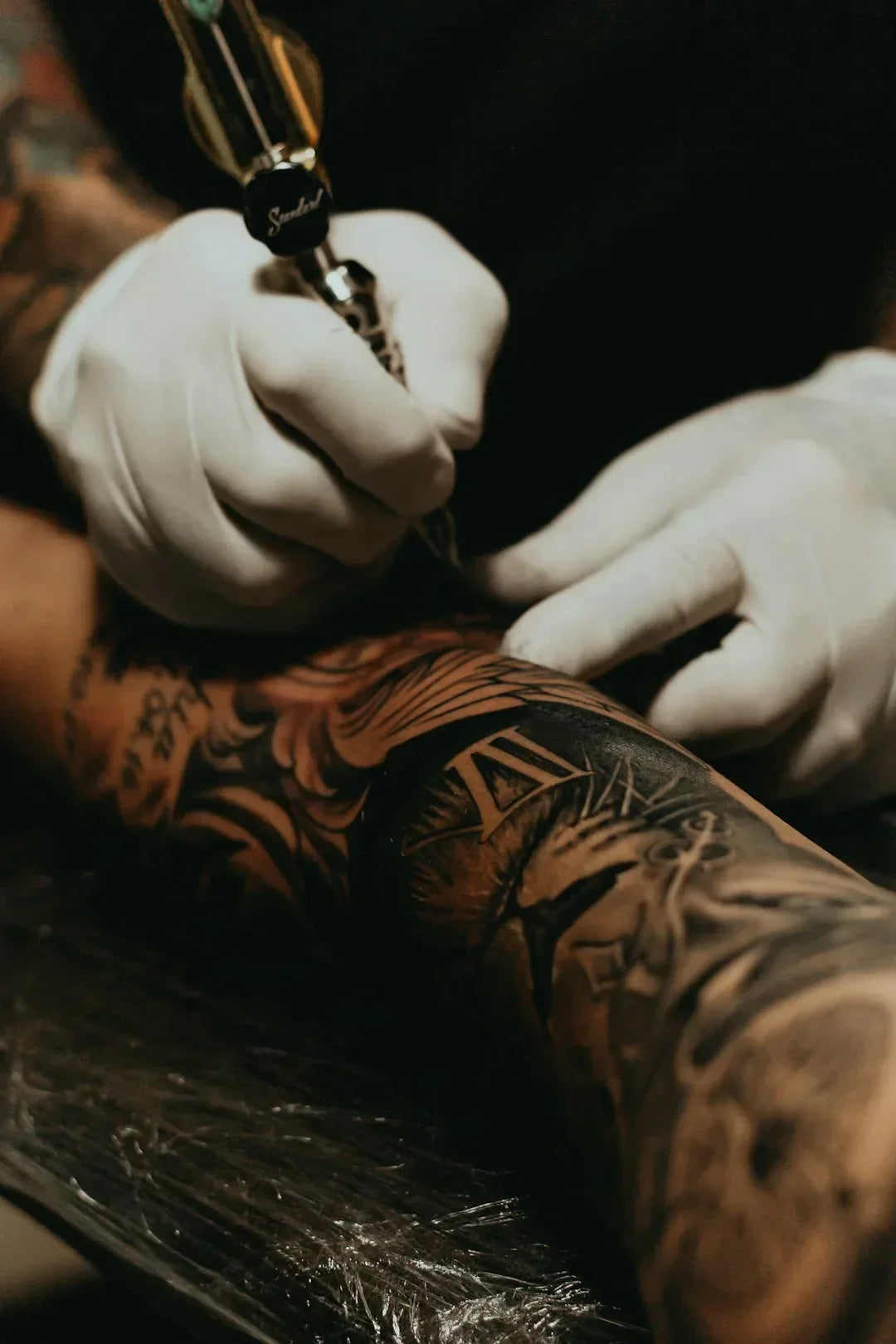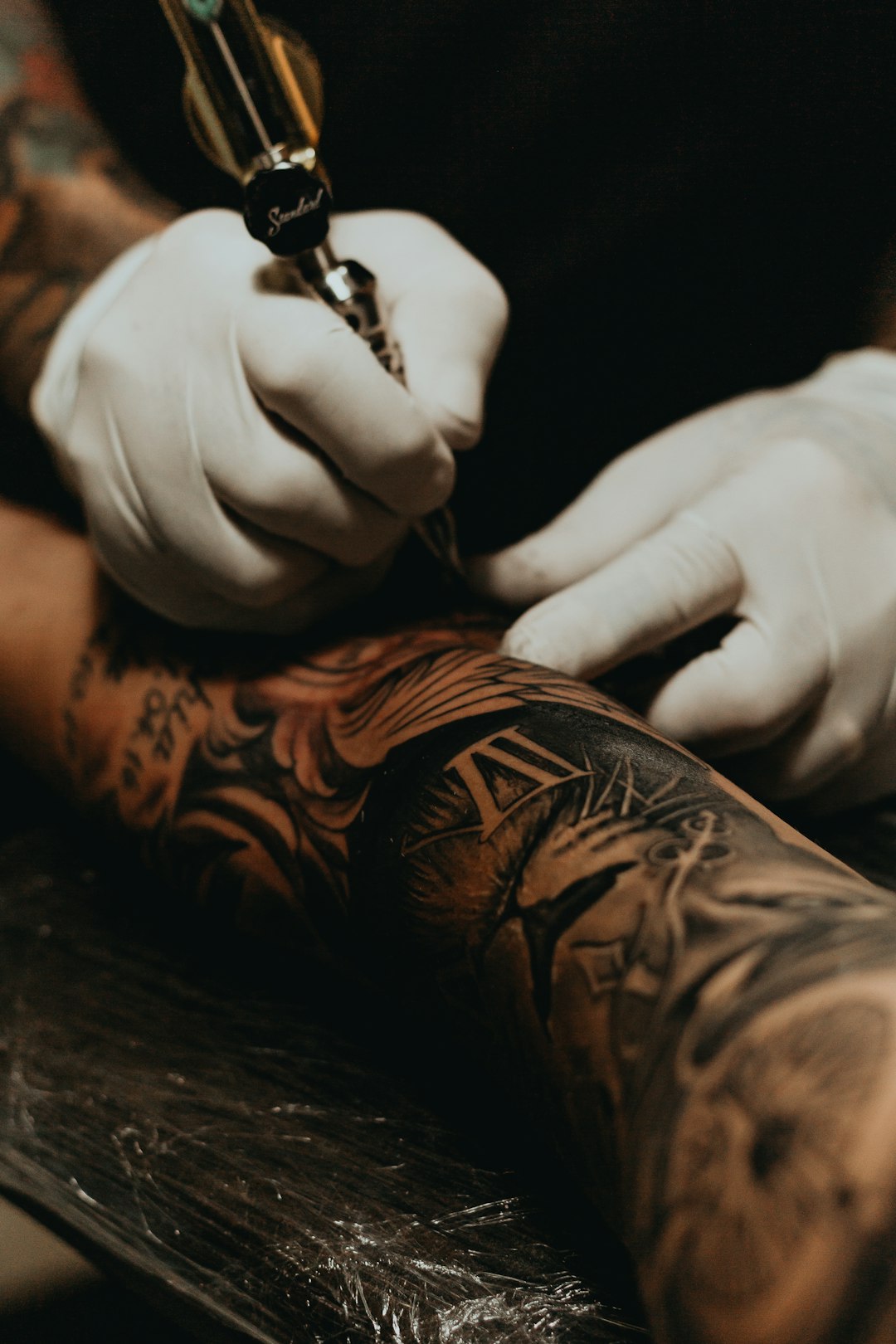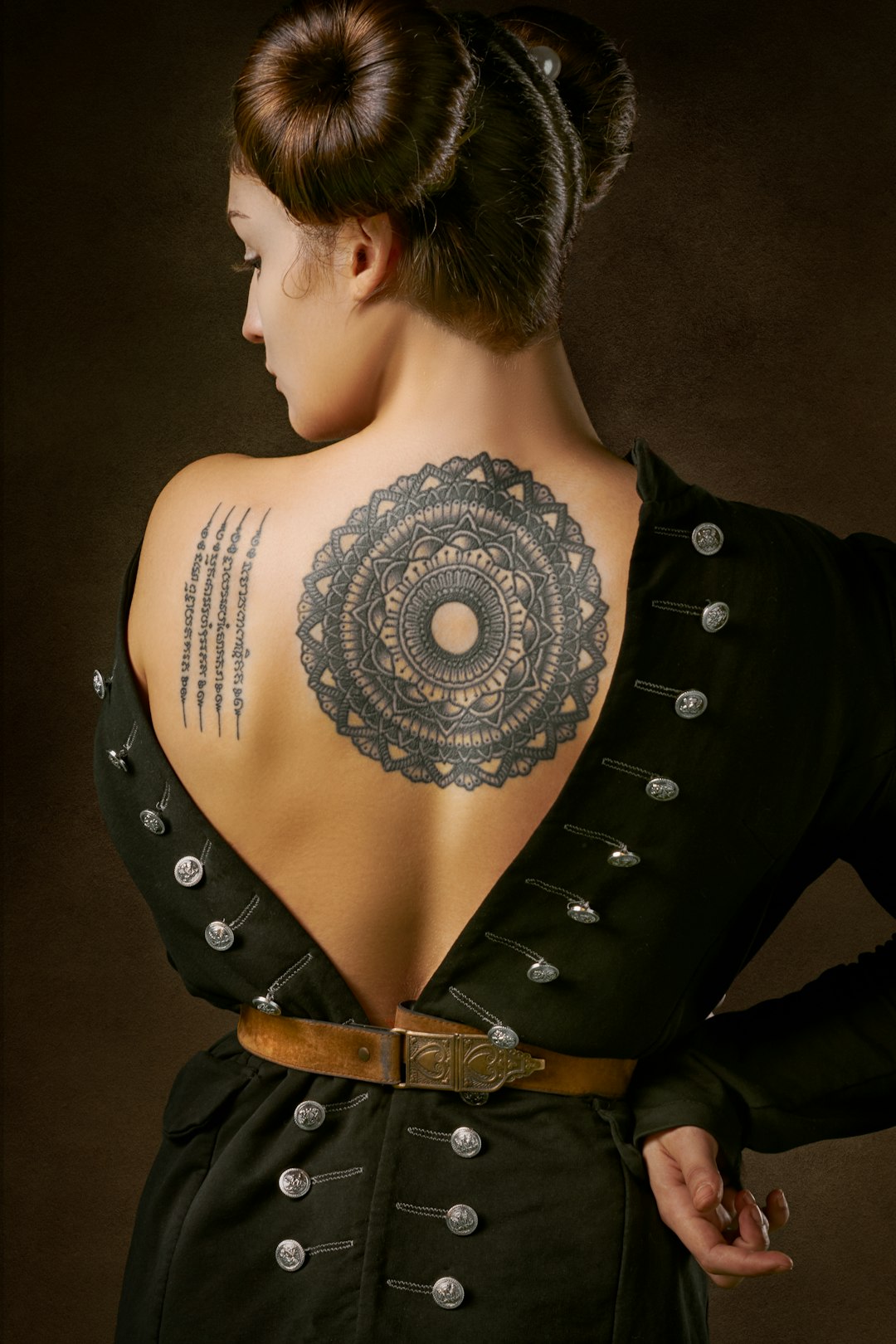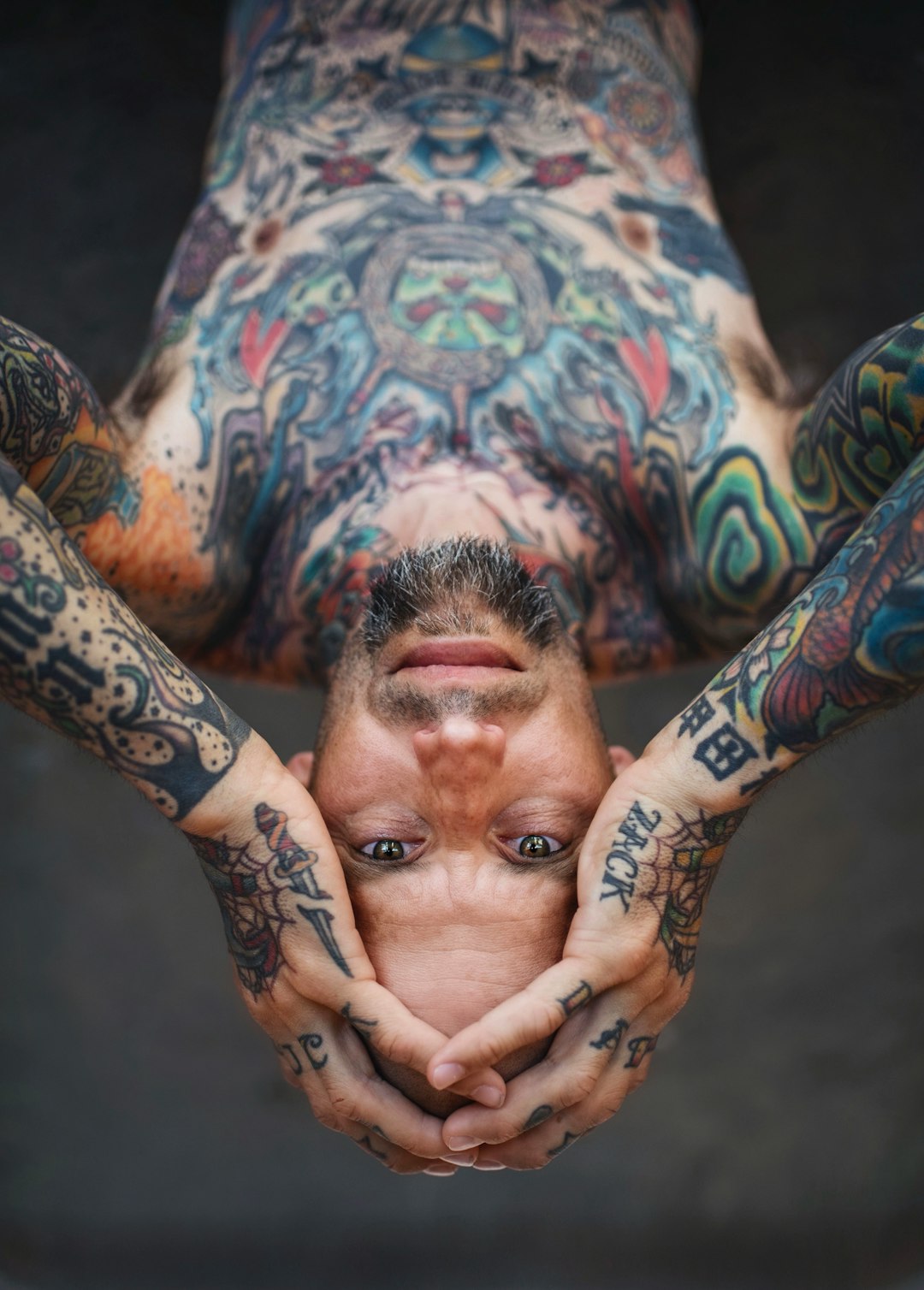
Las Crónicas Coloridas: Una exploración humorística de las técnicas del tatuaje y de los tatuajes famosos de la historia
Compartir

Los tatuajes, que suelen considerarse un lienzo de expresión personal y un tapiz cultural, tienen un pasado histórico tan colorido como las propias tintas. Desde los antiguos grabados en momias hasta el intrincado arte que adorna la piel moderna, la historia de los tatuajes es tan divertida como fascinante. Esta exploración profundizará en la evolución del tatuaje, destacando el significado cultural de los tatuajes a lo largo de las épocas, al tiempo que se incluyen algunas anécdotas divertidas sobre tatuajes famosos de la historia. Navegaremos por las variadas técnicas de tatuaje a lo largo de los siglos, desde métodos rudimentarios de punción hasta máquinas sofisticadas que vibran con creatividad. Prepárese para entretenerse e informarse mientras viajamos a través de las antiguas prácticas del tatuaje que han dado forma a la vibrante cultura del arte corporal actual.
Evolución del tatuaje
Prácticas de tatuajes antiguos
Retroceda en el tiempo y verá que nuestros antepasados estaban tan ansiosos por tatuarse la piel como nosotros hoy. Las prácticas de tatuajes antiguas estaban muy lejos de los salones estériles que conocemos ahora. Imagínese esto: un artista que habita en una cueva armado con huesos afilados y hollín, listo para hacer diseños en los participantes ansiosos (o quizás un poco aterrorizados). Los egipcios lo llevaron a un nivel superior, utilizando agujas de bronce para crear diseños intrincados. Mientras tanto, las culturas polinesias perfeccionaron el arte del "tap tattooing", que suena más como un movimiento de baile que una técnica de arte corporal. Estas antiguas prácticas de tatuajes no eran solo para exhibirlas: tenían un profundo significado cultural, marcando ritos de paso, estatus social e incluso intentos de tratamiento médico. Así que la próxima vez que se estremezca ante una aguja de tatuaje moderna, recuerde que sus antepasados probablemente lo pasaron peor.
Importancia cultural de los tatuajes
Los tatuajes han sido más que simples adornos corporales a lo largo de la historia. Han sido como un apretón de manos secreto, un cartel publicitario y, a veces, incluso una muy mala idea (te estoy mirando a ti, chico de "No Regerts"). En las culturas antiguas, los tatuajes se usaban para alejar a los malos espíritus, demostrar valentía o mostrar afiliaciones tribales. Los maoríes de Nueva Zelanda lo llevaron al siguiente nivel con sus intrincados tatuajes faciales, que eran como un CV portátil que detallaba el linaje y el estatus social de una persona. En algunas sociedades, incluso se creía que los tatuajes curaban enfermedades (¡hablando de medicina alternativa!). Si avanzamos rápidamente hasta hoy, los tatuajes se han convertido en una forma de autoexpresión, una forma de conmemorar a los seres queridos o, a veces, simplemente un recordatorio de esa noche salvaje en Las Vegas. El significado cultural de los tatuajes ha evolucionado, pero hay algo que permanece constante: siguen siendo una excelente manera de provocarles a tus padres un pequeño ataque cardíaco.
Técnicas de tatuajes a través de los tiempos

Métodos y herramientas tradicionales
Antes de la aparición de las máquinas de tatuaje modernas, nuestros antepasados se volvieron creativos con sus herramientas para tatuar. Imagínate que te pincharan repetidamente con un palo afilado: eso es básicamente lo que se sentía al pincharse con las manos tradicionalmente. ¡Ay! Los polinesios lo llevaron a un nivel superior con su método de "golpeteo", utilizando un mazo para clavar peines sumergidos en tinta en la piel. Es como un juego de golpear al topo muy doloroso. En Japón, la técnica Tebori implicaba utilizar un palo de bambú o metal con agujas adheridas: imagínalo como un bolígrafo de tatuaje prehistórico. Y no olvidemos la encantadora práctica de frotar hollín o ceniza en heridas abiertas para crear marcas permanentes. Estos métodos y herramientas tradicionales pueden hacer que los entusiastas del tatuaje moderno se retuerzan, pero allanaron el camino para el arte que conocemos hoy. Así que la próxima vez que estés haciendo muecas en una silla de tatuaje, ¡simplemente agradece que no sea un hueso afilado el que se acerca a ti!
Innovaciones modernas en el tatuaje
Si nos adelantamos hasta hoy, las técnicas de tatuaje han evolucionado mucho desde el método de pinchar y tocar. La máquina eléctrica para tatuar, inventada en 1891, revolucionó la industria más rápido de lo que se tarda en decir "Quiero un sello con forma de mariposa". Ahora tenemos aparatos de alta tecnología que hacen que el tatuaje parezca sacado de una película de ciencia ficción. Las máquinas rotativas zumban silenciosamente, mientras que las máquinas neumáticas utilizan la presión del aire para accionar las agujas; es como si tu piel estuviera recibiendo un pequeño cambio de imagen con un martillo neumático. Y no olvidemos esas elegantes tintas para tatuajes que brillan en la oscuridad o cambian de color con el sol. Son como los anillos del estado de ánimo, pero permanentes y probablemente una decisión de la que te arrepientas más adelante. Con los tatuajes en 3D e incluso los tatuajes "inteligentes" que pueden controlar tu salud, ¿quién sabe qué será lo próximo? Tal vez pronto podamos proyectar hologramas desde nuestra piel. ¡Eso sí que sería un buen tema de conversación!
Tatuajes famosos de la historia

Tatuajes icónicos y sus historias
La historia está llena de tatuajes que han dejado su huella (nunca mejor dicho) en la cultura popular. Tomemos como ejemplo al rey Harold II de Inglaterra, cuyo tatuaje en el pecho de "Edith" e "Inglaterra" resultó muy útil para identificar su cuerpo después de una batalla. ¡Hablamos de problemas de compromiso! Luego está el famoso tatuaje de la "Madre", un clásico entre los marineros y los estudiantes de vacaciones de primavera que se arrepienten por igual. La madre de Winston Churchill lucía un tatuaje de serpiente en el tobillo, lo que demuestra que incluso las damas británicas elegantes sabían cómo rebelarse. Si nos adelantamos a los tiempos modernos, tenemos el tatuaje facial de Mike Tyson, que se ha vuelto tan icónico que incluso demandó a una película. No olvidemos la historia del zar ruso Nicolás II, que se hizo un tatuaje de dragón en Japón y trató de ocultárselo a su madre. Resulta que incluso los emperadores no son inmunes a la desaprobación de los padres. Estos famosos tatuajes de la historia nos recuerdan que, ya seas un rey o un plebeyo, ¡un tatuaje lamentable es el gran ecualizador!
Los tatuajes en la cultura pop
Desde los galanes de la pantalla grande hasta los músicos que encabezan las listas de éxitos, los tatuajes se han convertido en parte de la cultura de las celebridades tanto como el café caro y las elecciones de moda dudosas. ¿Recuerdas cuando las coordenadas del brazo de Angelina Jolie provocaron una búsqueda del tesoro mundial para encontrar lugares de adopción? ¿O qué tal el cuerpo de David Beckham, que tiene más tinta que un puesto de periódicos? La cultura pop ha convertido los tatuajes en una especie de test de Rorschach de las celebridades: todos somos psicólogos aficionados que intentan descifrar qué significa esa nueva mariposa. Programas de televisión como "Miami Ink" y "LA Ink" convirtieron a los artistas del tatuaje en estrellas de la telerrealidad, haciéndonos creer que cada tatuaje viene con una historia de fondo conmovedora. Incluso los personajes animados no son inmunes: ¡solo mira a los presentadores de Popeye! Estos famosos tatuajes de la cultura pop han inspirado a innumerables fanáticos a tatuarse, lo que demuestra que la imitación es la forma más sincera de adulación, o el camino más rápido al arrepentimiento, según cómo lo mires.
No importa cómo te hagas un nuevo tatuaje o qué arte elijas, debes cuidarlo después de hacértelo. Tattoo Care es una fórmula natural a base de plantas que curará tu piel y protegerá tu tatuaje. Detiene la formación de costras y el sangrado de la tinta, por lo que tu tatuaje se mantiene vibrante y cicatriza más rápido. ¿Quién quiere mostrar inflamación y costras? Aprovechamos el poder de miles de años de conocimiento botánico y herbal con la última investigación médica para combinar ingredientes botánicos en una fórmula calmante y curativa. Viene con una garantía de devolución de dinero de 30 días, ¡algo que algunos de ustedes desearían que su tatuaje también viniera con!

